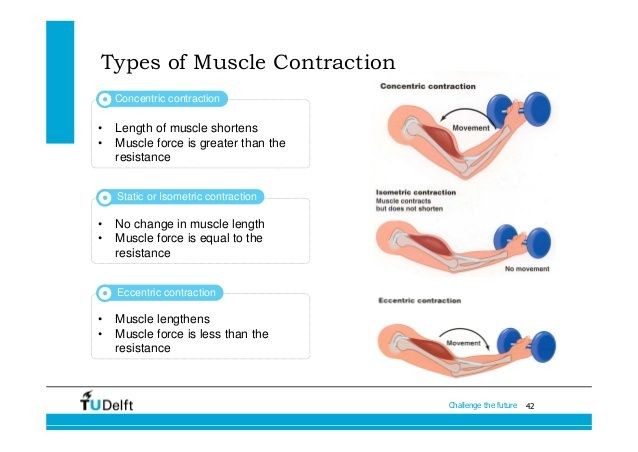Eccentric-Isometric-Concentric Muscle Contractions
Imagine if you were playing on a football team. And all you ever worked on was offense. Every practice would involve lining up at the 20 yard line and going through plays in an attempt to score a touchdown.
The coaches would design running and passing plays while mixing in the occasional quarterback sneak when the ball was near the goal.
No time would be spent on defense or special teams however. The GM would only select offensive players during the draft. Kick-off coverage and field goals were never practiced.
If you knew nothing about football you'd at least know that this strategy would not lead to success. Anytime the opponent had the ball you'd be on defense and not have practiced any tactics or strategy. For more than half the game you'd be at a loss of where players should be and what they should be doing.
Obviously this won't lead to succes.
Unfortunately this is how many approach their strength training.
Not even getting in to fact that many workouts may neglect many elements the individual needs, the resistance component is usually the same.
3 sets of 10 reps
And the emphasis is on the concentric portion of the lift. Think of this as the up portion of a bench portion or a squat. This is the part of a contraction when a muscle shortens or contracts. And it's what most people think of when a muscle works.
But there are two other parts of a muscular contraction which are the eccentric and isometric. During the eccentric portion of a lift the muscle lengthens and helps us reduce force as we lower a weight toward the body. With isometrics the length of the muscle is constant and helps us with our stability. Think of holding a plank for time and you'll appreciate how isometrics fit into the picture.
Do you put emphasis on all phases of a muscular contraction? Or focus only on the concentric?
Another way of thinking about this is the following.
Are you chronically injured?
Do you have a weak core?
Have your lifts plateaued?
Are you feeling burned out with your training?
Do you play a sport that is primarily played with an emphasis on only one of the phases of contraction? For example, swimming and cycling would be examples of (primarily) concentric sports.
Most of us will answer "Yes" to more than one of the following questions above. If that is the case we are leaving potential results on the table.
With finances, it would be like investing in only one industry and not diversifying your funds across industries, sectors, in various markets and cash.
Or it would be like entering a bike race with a single gear bike. You'd use the same gear for the flats, sprints, climbs and decents.
Or nutritionally this would be like getting all your nutrition from meat and not eating any fruits, vegetables, starches, fats or oils.
Approaching your training with a wider perspective of the various aspects of a muscle action will help:
- reduce injuries
- enhance sports performance
- help you move better
- increase strength and speed
- add a novel aspect yo your training
Cal Dietz in his book Triphasic Training does a great job of explaining the various phases of training and how to incorporate these in an optimal training program. It is a long, and intensive read though. If you'd like to reap the rewards without having to read this book and educate yourself on the topic simply leave us a comment or email athletetraining (at) shaw (dot) ca and we'll follow up with you.
When you subscribe to the blog, we will send you an e-mail when there are new updates on the site so you wouldn't miss them.

Comments